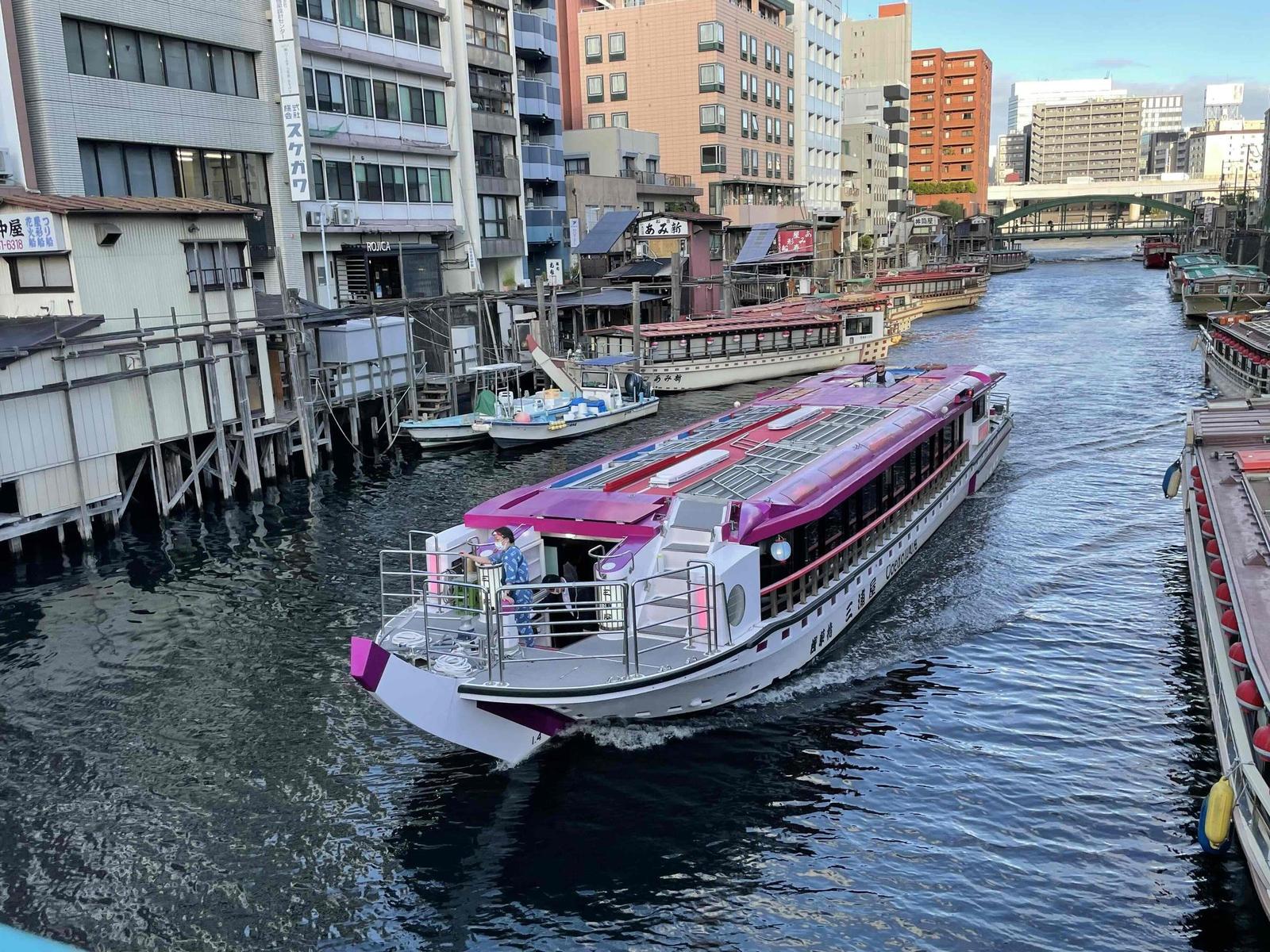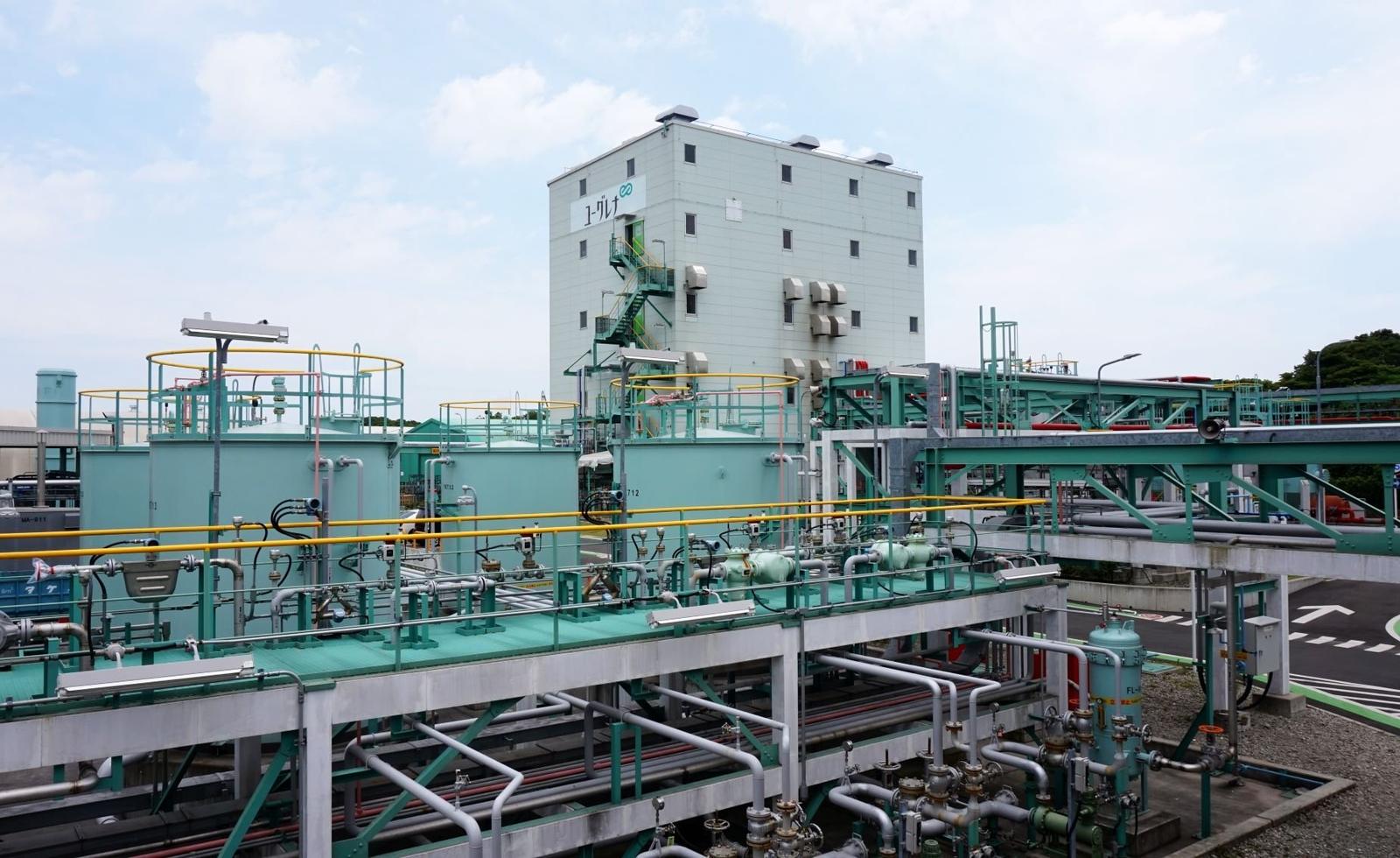Yakatabune (Roofed Boat) Powered by Biofuel Sails the Sumida River in Tokyo
CO2 Absorption by Microalgae Euglena
As part of efforts to advance the Zero Emission Tokyo Strategy, the TMG has partnered with Euglena Co., Ltd., which manufactures and sells the next-generation biodiesel fuel SUSTEO, and the Tokyo Yakatabune Association, to operate a yakatabune (roofed boat) that uses SUSTEO on the Sumida river for roughly three weeks from September 6, 2022. This was the country's first operation of a yakatabune running on biofuel.

Euglena was established in 2005. The company succeeded in producing an outdoor mass culture technology for the microalgae euglena, after which they are named, and have developed and sold foods and cosmetics that utilize the rich nutrients in euglena. In 2010, they started developing biofuel that uses oils and fats extracted from euglena and in 2018, they completed a biofuel production demonstration plant in Yokohama City.

SUSTEO, the biofuel used for this yakatabune, is derived from "sustainable oil" and is considered a next-generation biodiesel fuel. Although traditional biofuel has similar characteristics to typical diesel fuel, the differences in molecular structure meant it could only be used when blended with up to five percent of commercial diesel fuel. However, because this next-generation biodiesel fuel has the same molecular structure as typical diesel fuel and conforms to the country's diesel fuel standard, it can be used as 100% of the fuel.
"SUSTEO has the same molecular structure as diesel fuel, which means CO2 is emitted when it is burned. However, burning SUSTEO is different from burning diesel fuel made by digging up fossil fuels buried underground. Because the plants and euglena - which are used to make cooking oil - absorb CO2 from the atmosphere as they photosynthesize during their growth process, CO2 emissions are essentially zero. As such, the fuel is expected to contribute to the achievement of a carbon-neutral society. It is an excellent sustainable fuel that doesn't lead to problems such as competition with food or deforestation," says Odate Korehiro, Euglena's Executive Officer and Energy Company CEO.
Expansion of Production System for Full-scale Practical Application
"Our demonstration plant is able to produce 125 kiloliters of biofuel per year. In 2025, we plan to complete a commercial plant with a scale of 250,000 kiloliters per year, 2,000 times the amount of the current demonstration plant. I felt deeply moved when I saw the yakatabune running on SUSTEO in Japan's capital of Tokyo. In the past, the TMG has made various efforts such as introducing hydrogen shuttle buses and actively introducing renewable energy, and I hope that our SUSTEO can be one of the solutions that contribute towards the achievement of the Zero Emission Tokyo Strategy," says Odate.
As of November 2022, there are over 60 companies and organizations that have adopted SUSTEO, and it is being utilized for various means of transportation such as buses, ships, and planes. Let us look forward to the further expansion of eco-friendly biofuel.
Translation by Amitt




